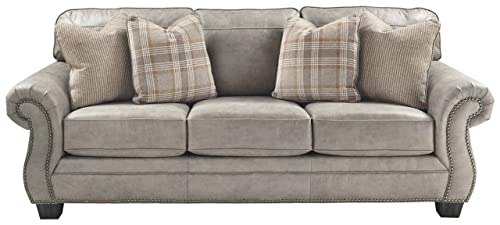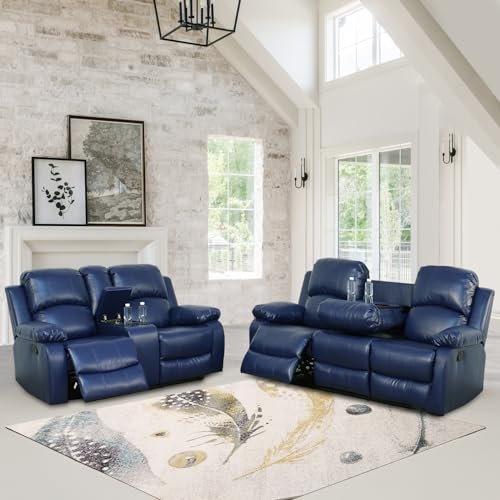What's The Most Important "Myths" About Genuine Leather Sofa…
페이지 정보
작성자 Enriqueta 댓글 0건 조회 42회 작성일 24-09-14 16:51본문
 How to Spot a Genuine Leather Sofa
How to Spot a Genuine Leather SofaThis sofa is a wonderful option for any room. Its leather upholstery is buttery soft. Customers adore its simple styling and top-quality, genuine leather upholstery.
Untrained eyes may be unable to in discerning the difference between real and faux leather. Here are six suggestions to help you distinguish between the two types: 1. Edges that are rough.
1. Check the label
Genuine leather is difficult to duplicate. It's unique in appearance and feel. It's also robust and easy to clean. It does not absorb body oils, making it ideal for families with allergies. Not all leather sofas, however, are made equal. Some stores have even been recognized for presenting PVC as genuine leather.
Understanding the different types leather will help you to avoid being ripped off. This includes determining full grain and top-grain leather, and also evaluating the quality of the material used in the upholstery. Retailers with discerning eyes will be more than happy to provide you with this information, so don't hesitate to inquire!
The first step to identifying a genuine leather couches for sale near me sofa is to examine the label. It should clearly identify the type of leather the sofa is upholstered with, along with any other materials like cotton or fabric. Additionally, reliable sellers should have clear policies on exchange or return in the event that you aren't happy with your purchase.
If the sofa doesn't come with an identifier but you can figure out the authenticity of the sofa by examining the fabric backing or opening up a cushion casing to check for synthetic material. You can also look at the texture of the leather to determine if there are any imperfections or bumps. These are indications that the leather is fake or has been bonded.
Another way to test the integrity of a sofa is by the surface of the sofa with your fingertips. Genuine leather is soft and smooth in texture. Faux leather or bonded leather is rougher and feels more like suede. Additionally, you should be able to feel a difference between the bumps and wrinkles of genuine leather and the printed patterns on faux leather.
While the genuine leather sofa will cost more than its imitation counterpart It's a wise investment as it will last longer and will often end up as family heirlooms through the years. You can limit the damage caused by sun as well as ozone, heat and humidity by placing your leather sofa in a cool, dark area away from heaters, fireplaces and air conditioning. You can also use leather protection creams to keep your sofa soft and sturdy.
2. Take a look at the back
If the label does not indicate what kind of leather is used in a sofa, it is essential to examine it close. The smell, texture and the backing will be a clear indication of authenticity.
When you touch the surface of genuine leather, it won't feel smooth and perfect. This is because animal hides have different shaped pores which allow them to breathe. However, a product that feels completely smooth suggests it could be fake leather.
Check for bumps or uneven surfaces. Genuine leather is made by rubbing away a portion of the rough outer layer. However, if the material you use to cover your sofa is top-grain leather, it will still have a few bumps.
You can also test the quality of leather by putting your finger into it and then running it across it. If the leather is real it will stretch and wrinkle just like human skin. This allows the leather to breathe and keeps it from becoming dry or cracking over time.
Faux Leather Couch leather is printed and has a consistent pattern, however genuine leather has natural imperfections that add to its beauty and durability. This includes creases and scratches. Genuine leather is soft and a bit stiff when it is new. However, it won't dry out or crack if you condition it regularly with a leather protection cream.
To cut costs, some furniture makers make use of a mixture of synthetic and real leather to make their products. The contact areas such as seats and armrests, as well as backs, are made of real leather, while the non-contact parts like the base and outside arms, are upholstered with a cheaper polyurethane or rustic leather sofa-like synthetic fabric. Even if the sofa is advertised as genuine leather, you should take a close look at the backing to determine if the couch is genuine leather.
Labels and pricing can help you determine if a sofa is genuine leather, but it is important to examine it in person. Look at the back of the sofa for traces of polyurethane, which is an indication that it's not genuine leather.
3 seater leather sofa. Look at the seat
A genuine leather sofa's seating is an indicator of its quality. While many faux leather couches use various materials for upholstery, genuine leather has a unique texture that is smooth to the touch and is not entirely uniform in color and shade. Be aware of bumps under the surface and a strong, natural scent. These are the characteristics that distinguish genuine leather from low-grade or artificial fakes.
If the leather is stitched in a continuous, huge piece, that's another warning sign. Although this isn't uncommon when using faux leather, if you see this with real top-grain leather it's likely a sign that the sofa isn't of high-quality and should be avoided.
Labels and pricing can give you an idea, but the only way to determine is to be in close proximity to the furniture. Genuine leather shouldn't be perfect and feel uneven. It will also have fat wrinkles under the surface and rough edges. The suppleness of genuine leather also feels distinct from synthetic materials and the temperature of the furniture will indicate whether it's constructed with authentic materials.
A leather sofa is a mainstay in interior design for a reason: It's stylish, durable and lasts for a long time. It's also easy to clean and resistant to spills of liquid. This makes it an ideal option for families with children or pets. Genuine leather is a timeless style that will never be out of fashion. It's also available in various price ranges.
For a classic leather couch that will last for a long time, consider the Pottery Barn Turner. While this two-seater model is on the pricier side, it's crafted with quality top-quality leather and features a classic silhouette that won't date quickly. This is a great choice for those with a limited space, as it comes three sizes and can fit in the majority of rooms.
This All Modern Geo Genuine Leather sofa is a great choice for those who want something contemporary. This couch is a mid-century modern-inspired style with a sleek, angular frame and asymmetrical pillows that combine design and function. The sofa is made from plywood composite, plastic, and. However, the leather is only used for the seating area. It is an improvement over Ikea's faux-leather sofa which was awarded the CHOICE's "Shonky Award" in 2015.
4. Check out the smell
Real leather has an unmistakable scent. It's a natural, organic scent that cannot be duplicated. If the sofa you are looking to purchase has a strong smell of synthetic, this is an indication that it's not authentic. Often this is caused by the chemicals used to process the leather, which remain in the furniture after it's been made and even once you bring it home.
A great way to determine the quality of leather sofas is to gently run your fingers along the surface. Genuine leather will have bumps and lumps just like the human skin. If it is smooth and cold, it is most likely fake or the leather is bonded.
Alternately, you can open up one of the cushions and inspect the backing. The faux and bonded leathers may have a polyurethane backing to help support the fabric, whereas genuine leather has a natural backing that is similar in appearance to coarse suede. If the couch is backed by a woven fabric it is not real leather.
Peter says that the best way to determine if a sofa is real is to gently run your fingernails over the surface. The roughness of the leather should make your fingernails slightly dull and the surface will stretch and wrinkle a bit. It will also feel warm to the feel.
The sofa's back and inspecting the upholstery will also tell you if it is genuine. False and bonded leathers will have a plastic covering on the back of the sofa while genuine leather will be a single, continuous piece of leather that covers the entire back of the couch.
 When deciding on the quality of your leather sofa, consider the amount of use it will receive and how long you want it to last. The more you use your couch, the more care it will require. Peter suggests a regular, gentle cleaning with a conditioner for leather. This will help to keep the leather's suppleness intact and prevent it from drying out and becoming hard.
When deciding on the quality of your leather sofa, consider the amount of use it will receive and how long you want it to last. The more you use your couch, the more care it will require. Peter suggests a regular, gentle cleaning with a conditioner for leather. This will help to keep the leather's suppleness intact and prevent it from drying out and becoming hard.댓글목록
등록된 댓글이 없습니다.